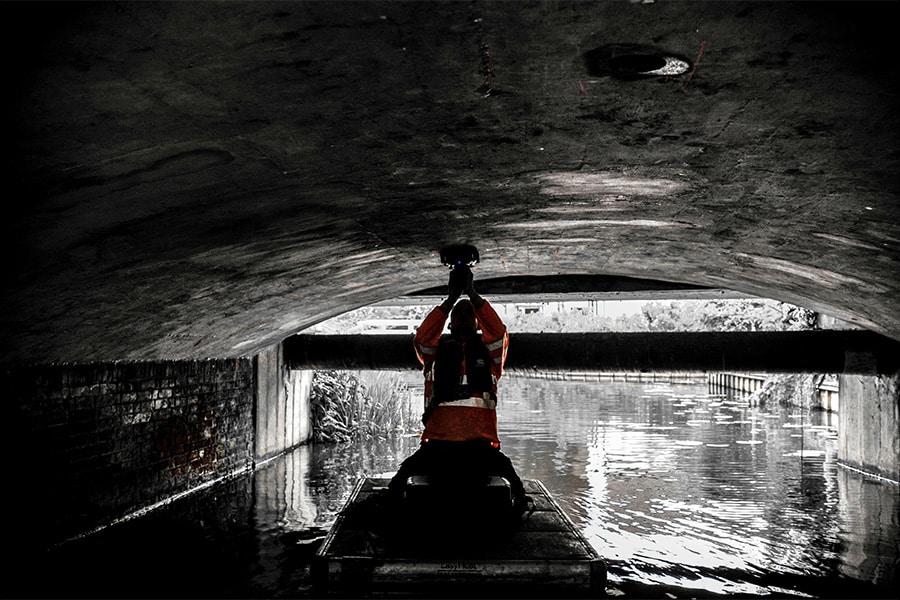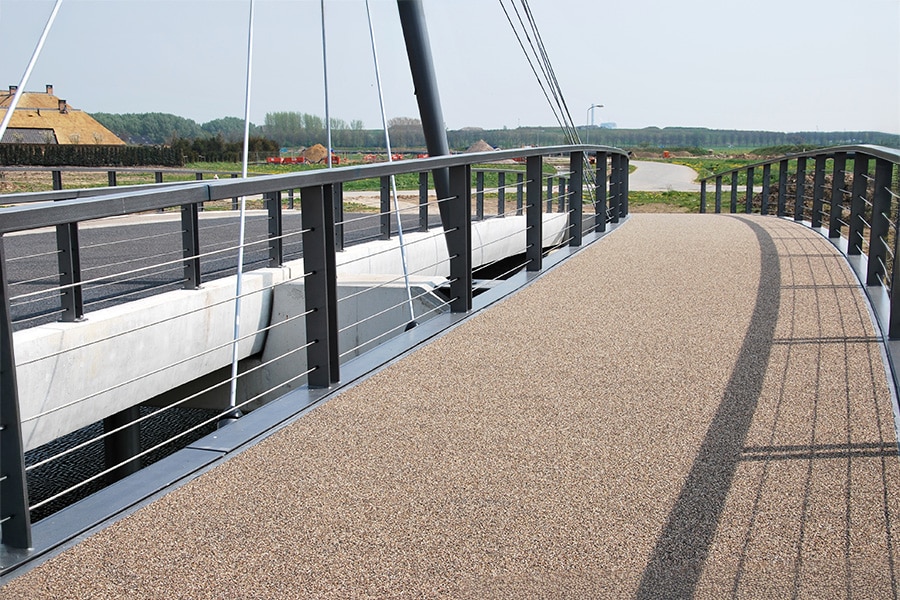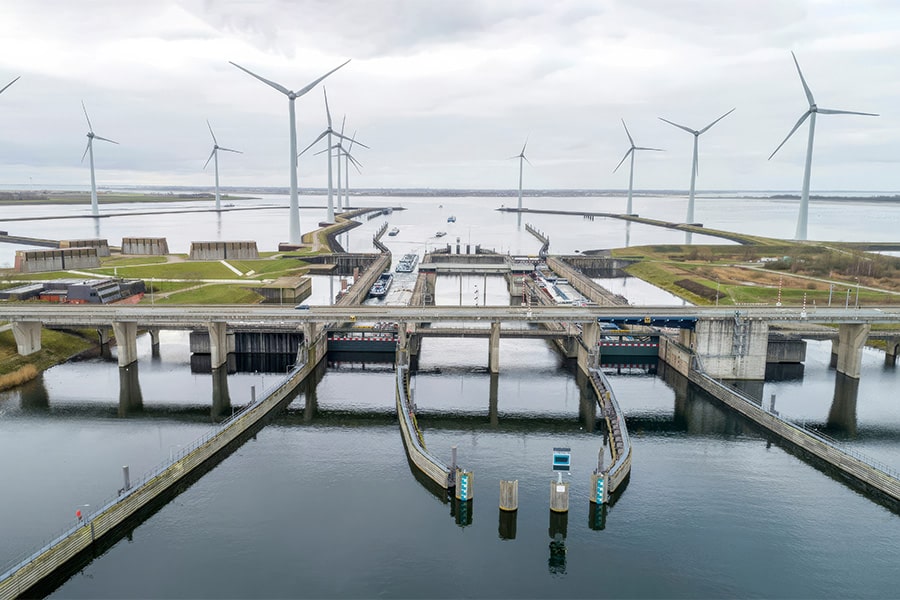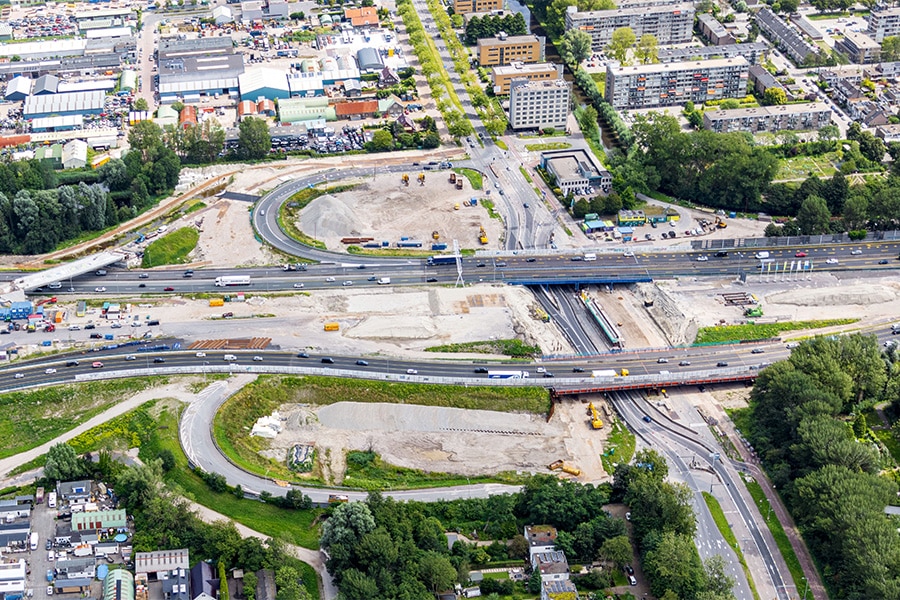
Proud partner joins (internal) forces
With a nominal value of 1 billion euros, the Blankenburg connection is one of the largest Public Private Partnership (PPP) projects in the Netherlands. As a partner in both SPC (shareholders) and EPC (construction consortium BAAK), it is a special assignment for Ballast Nedam. "We bring the expertise and capacity of different disciplines together in a tight and integral team. This is how we guarantee an efficient and qualitative project and on-time delivery in 2024 for Rijkswaterstaat," says Peter Kanninga, commercial director Ballast Nedam Infra Projects.
The DBFM consortium consists of an integrated collaboration between Ballast Nedam, DIMCO BV and Dredging International. The latter two are subsidiaries of DEME Group. "Together with our partners in the EPC, we are realizing the entire scope of the project where the focus from Ballast Nedam is mainly on the structures, complex foundations and tunnel technical installations. We also have an important share in the design and project management of the entire project," Kanninga explains. "The latter is a profession in itself on such a complex and challenging project with many stakeholders. Perfect coordination and managing everyone's expectations is then crucial. That obviously also applies to contact with local residents, water boards, the Port of Rotterdam, Vlaardingen municipality, and so on."
Virtual Reality
Technically, the Blankenburg connection is also a feat. Kanninga: "Building the immersed tunnel under Het Scheur and constructing the ramps in deep construction pits up to 30 meters below ground level demands a lot of our organization's knowledge and skills, such as in-house engineering. We also surrounded ourselves with many Dutch specialists, such as TEC, to jointly design the immersion tunnel and deep construction pits. Our strength is very much in keeping the design technically feasible. Designing complex technical objects is one thing, but being able to guarantee constructability during the design is another. This is where we have been able to make the difference with the experience and expertise of our various business units. Using state of the art BIM models and Virtual Reality (VR) techniques further supports this process. In this respect, too, we are innovative as an organization and constantly looking for further development. We have to be, because the deep construction pits are both technically complex, cut through the primary flood barrier and are also in one of the busiest shipping areas in the Netherlands."

Strengthening each other
As one of the oldest construction companies in the Netherlands (active for more than 140 years), Ballast Nedam has a rich history of large, innovative and complex projects. This extensive project logically involves several business units, such as Ballast Nedam Road Specialties and Ballast Nedam PMC Specialties. "One of our strengths is that as subsidiaries we always know how to find each other very easily. We can rely on each other and strengthen each other continuously," says Joep Hartjes, director of Ballast Nedam Road Specialties. Since the award to BAAK, the combination has been responsible for the management and maintenance of the entire A20 and A15. "As a broad-based road construction company, we can play a significant role in every phase of the Blankenburg connection. After all, we have all the expertise and resources to construct a road from A to Z, including markings, guide rail constructions and even greenery maintenance."
Optimal lifecycle model
BAAK is committed to pursuing the most optimal lifecycle model, the result of the DBFM contract. "In other words, to design the project so that it has the desired quality over the entire life cycle at the lowest cost," Kanninga acknowledges. "That's also why we place so much value on cooperation between our business units. We draw on each other's experiences and best practices, and do not hesitate to engage in product innovation to make a difference. Not infrequently, unique solutions are also developed for this purpose." Hartjes adds: "For the A9 Gaasperdammerweg, for example, we developed a new type of asphalt that reflects light better so that less lighting is required in the tunnel. And so we try to make a difference on every project. There are also plenty of challenges with the Blankenburg connection. For example, we are now contributing our expertise to the development of a special type of asphalt with a longer lifespan." Ballast Nedam Road Specialties built the construction roads on the project and moved part of the A15 to create space for the construction of the structures. The big bang will come from 2022 when the asphalt is turned for the tunnels and the junctions with the A15 and A20.

Reducing risks
Speaking of soil conditions, one of the biggest challenges in infrastructure is managing the risks regarding the geotechnical condition of the subsurface. "We already seek each other out in the tender to recognize risks at an early stage," says Thom Hienekamp, director of Ballast Nedam PMC Specialties, an expert on foundations and anchors, among other things. "Realizing and excavating a construction pit up to 30 meters below ground level is no sinecure. With all our knowledge and experience, we try to minimize potential risks. We dare to be different from others. Entrepreneurship has been placed very low down in our organization. This means that we often come up with fresh ideas and methodologies that may be technically complex but do create added value for our customers, such as realizing the decks of the fly-overs above the A15 motorway without any traffic disruption or limiting the number of immersion operations of the Maas Delta Tunnel by immersing not six but two elements." Ballast Nedam PMC Specialties is operating on almost the entire route and is currently busy excavating the construction pits.
The gentlemen are only too proud to contribute to the extensive project with its chain of technical tours de force. "This applies to our entire organization," Kanninga adds. "We really do it together with a lot of craftsmanship and above all a lot of passion."



